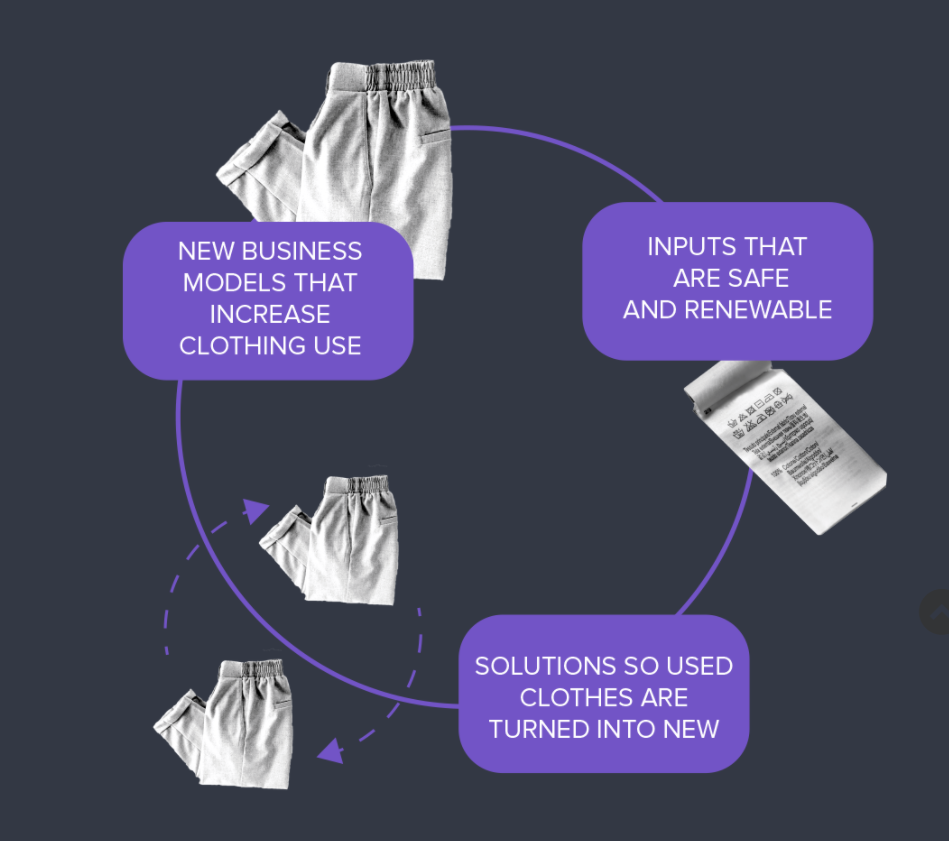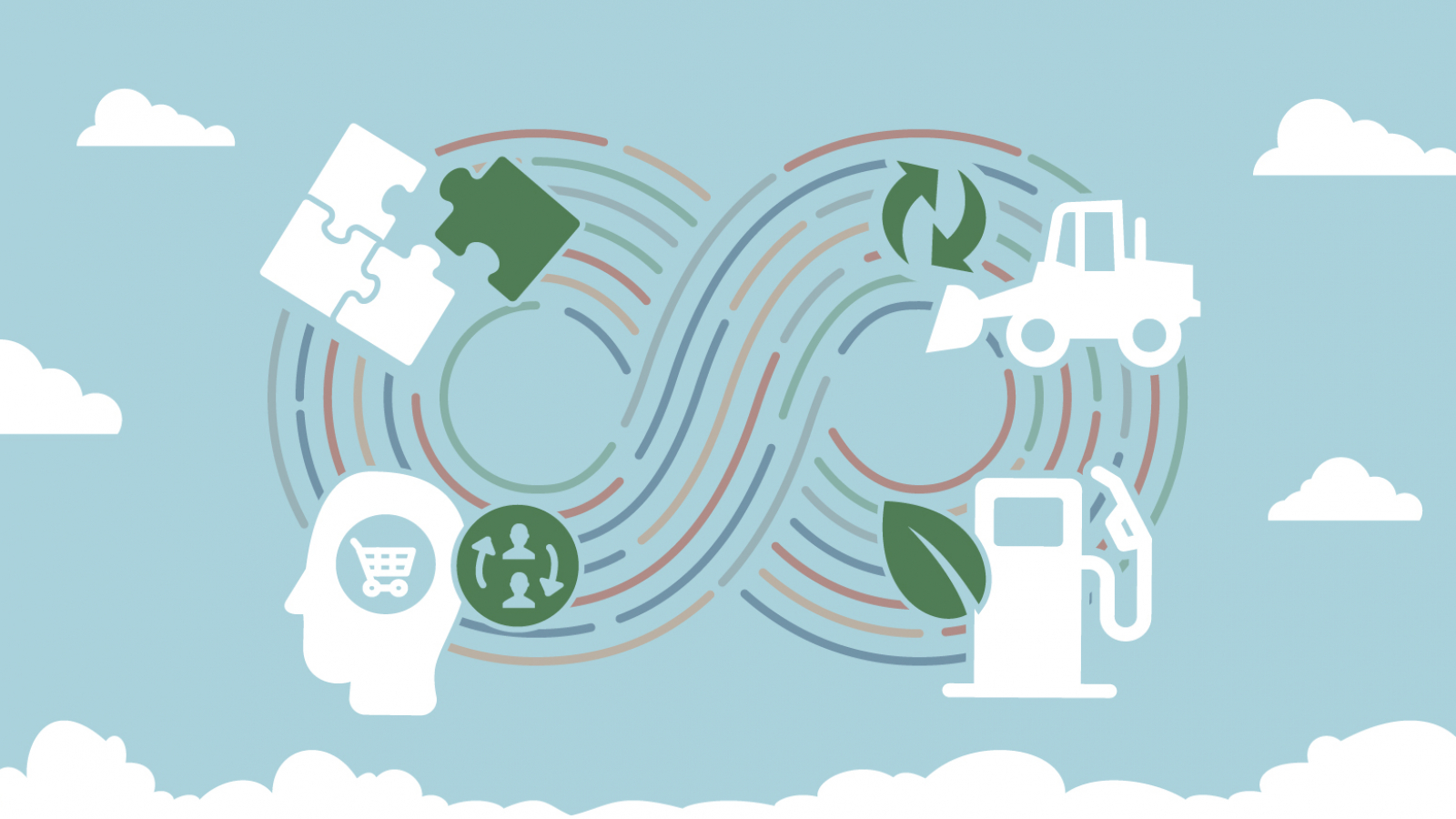Currently, the majority of the industries are still using the take-make-waste extractive industrial model. The circular economy on the other hand, “entails gradually decoupling economic activity from the consumption from finite resources and designing waste out of the system.” It is a transition to a more sustainable world and a systematic shift from the traditional linear economy. The model values the importance of the economy needing to work effectively at all scales.
Basic principles:
- Design out waste and pollution
- Keep products and materials in use
- Regenerate natural system
Technical cycles
Technical cycles use recover strategies like reuse, repair, remanufactured, or recycling to restore products, components, and materials.
We need to start think differently
“The real voyage of discovery lies not in seeking new horizons but in seeing with new eyes”
Andre Gide
System thinking is to understand how the parts of a system interact to produce the behavior of the whole system.
Fashion and the circular economy
To the fashion industry, the circular economy encourages new business models that increase clothing use, focus on safe and renewable input, and find solutions for the used clothing to be turned into new. The issues with the current fashion industry are that clothing is massively underutilized and leaves an immense footprint by relying on non-renewable resources.
To solve the problem, the system identified couple characteristics:
- It produces and provides access to high-quality, affordable, individualized clothing.
- It captures the full value of clothing during and after use
- It runs on renewable energy and uses renewable resources where their input is needed
- It reflects the true cost of materials and production processes in the price of products
- It generates natural systems and does not pollute the environment

–
The circular economy is a great idea to incorporate into a business model. It poses the idea of how to make products that are of high-quality and durable. It challenges the current linear way of production. What would it look like if the fitness industry were to adopt the idea of a circular economy and reimagining how fitness equipment is used maintained and recycled?




